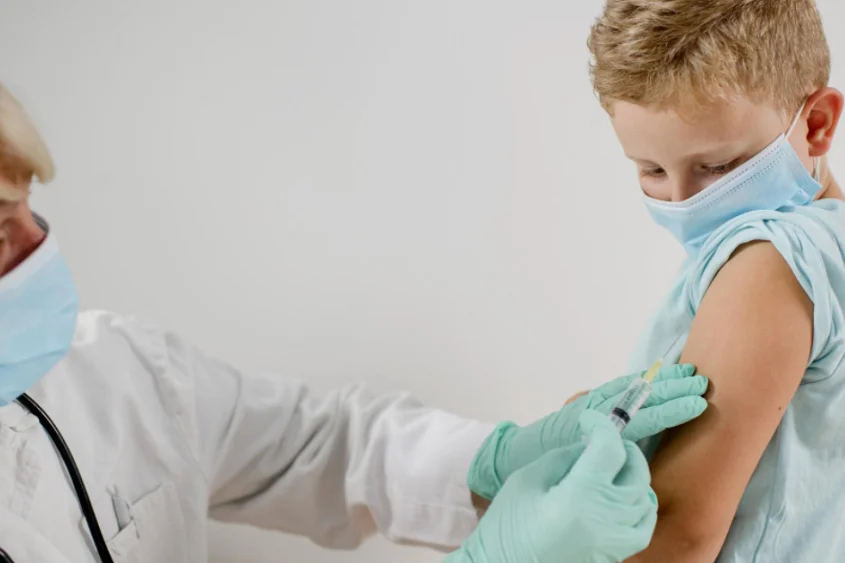Child Safety and Health: Preventive Measures for a Bright Future
- Updated on: Nov 22, 2024
- 4 min Read
- Published on Oct 10, 2023

Childhood is a precious time filled with laughter, curiosity, and growth. As parents and caregivers, our primary responsibility is to provide a nurturing environment that fosters our children’s physical and emotional well-being. A fundamental aspect of this responsibility is ensuring our children’s safety and health, which extends beyond the confines of our homes. This comprehensive article delves deeply into the significance of preventive measures in promoting child health and safety, focusing on the critical role of car seat safety.
Nurturing a Healthy and Safe Childhood
A healthy and safe childhood lays the foundation for a promising future. From the moment a child enters this world, they rely on their caregivers to create a secure and nurturing environment. It begins with the basics: a safe home, proper nutrition, access to quality healthcare, and emotional support. However, it encompasses much more—providing a safe space for exploration and play, ensuring mental and emotional well-being, and safeguarding them during travel, where unforeseen dangers lurk.
Preventive Measures: Safeguarding Child Health
Preventive measures are proactive steps to protect our children’s health and well-being. They are designed to anticipate and mitigate potential risks and health concerns, ultimately ensuring a healthier and safer childhood. Preventive measures include but are not limited to:
Vaccinations
Vaccinations are a cornerstone of preventive healthcare for children. They protect against potentially life-threatening diseases like measles, mumps, rubella, polio, and more. Immunization shields the child and contributes to herd immunity, making communities safer for everyone.
Regular Health Check-ups
Routine health check-ups are instrumental in identifying health issues early. These comprehensive examinations can detect developmental concerns, nutritional deficiencies, and potential illnesses, providing timely interventions and treatment.
Safety Protocols
Safety protocols extend to daily life, from childproofing your home to practicing water safety. Ensuring a safe environment for children minimizes the risk of accidents and injuries.
Car Seat Safety: Protecting Young Passengers
The safety of young passengers during car travel is of paramount importance. Car accidents are a leading cause of injury and death among children, underscoring the significance of providing proper protection. Car seat safety laws are the linchpin in ensuring the safety of children during vehicle journeys.
These laws establish guidelines for the use of car seats, taking into account a child’s age, weight, and height. It is essential to recognize that car seats are not one-size-fits-all. They come in various types, each tailored to a child’s growth and development stages.
Types of Car Seats
Infant Car Seats
Designed for newborns and young infants, these rear-facing seats offer crucial support for a baby’s head and neck. They cradle the infant in a reclined position, distributing the force of impact across the body in the event of a collision.
Convertible Car Seats
Convertible seats are suitable for toddlers and older children and can be adjusted to fit different ages and sizes. They initially function as rear-facing seats and can later be converted to forward-facing seats as the child grows.
Booster Seats
These seats are intended for older children who have outgrown convertible seats but are not tall enough for a regular seatbelt. Booster seats elevate the child, enabling the seatbelt to fit correctly across their body and preventing injuries during travel.
The Impact of Car Seat Safety Laws
Implementing car seat safety laws has been pivotal in reducing injuries and fatalities in car accidents involving children. Before introducing these laws, many children were inadequately restrained in vehicles, leading to tragic outcomes in accidents. Car seat safety laws have changed significantly by mandating appropriate car seats for children, depending on their age and size.
Research and studies have consistently demonstrated the effectiveness of car seats in reducing the risk of injury and death. Rear-facing car seats, for instance, offer exceptional protection for infants and young children. They disperse crash forces evenly across the child’s body, significantly reducing the risk of severe injuries.
Forward-facing car seats, designed for older toddlers and children, effectively restrain the child’s upper body and prevent forward movement during a collision. This restraint is instrumental in preventing injuries and ensuring the child’s safety during travel. Booster seats, on the other hand, provide an elevated seating position, allowing the seatbelt to fit correctly and safeguard the child.
Compliance and Education
Ensuring compliance with car seat safety laws is a shared responsibility. Parents and caregivers must familiarize themselves with the laws applicable in their state or region and the specific guidelines for car seat usage based on their child’s age and size. Compliance with these laws not only upholds safety but also serves as a legal obligation.
Law enforcement agencies and organizations also play a crucial role in promoting compliance. They conduct educational campaigns to raise awareness about car seat safety and enforce the laws through monitoring and fines when necessary. These efforts reinforce the importance of car seat safety and underscore that the safety of young passengers is non-negotiable.
Educating Parents and Caregivers
Education is the linchpin of car seat safety. Parents and caregivers must invest time in understanding the guidelines and recommendations for car seat usage. Many hospitals offer car seat safety classes for new parents, ensuring they comprehend how to install and use car seats correctly. Additionally, numerous online resources and organizations provide valuable information and support for parents seeking to prioritize their child’s safety during travel.
In conclusion, child safety and health are paramount in ensuring a bright and promising future. Preventive measures, including vaccinations, regular health check-ups, and adherence to car seat safety laws, are essential to providing a safe and healthy childhood. Car seat safety, in particular, is pivotal for protecting young passengers during travel, significantly reducing the risk of injuries and fatalities in car accidents.
By understanding and complying with car seat safety laws, parents and caregivers can markedly enhance the safety of their children during travel. Education and awareness are pivotal in promoting compliance, and an abundance of resources is available to empower parents to make informed decisions regarding their child’s safety during journeys.
By implementing preventive measures, including car seat safety, we can nurture a healthy, secure, and promising childhood—a gift that will last a lifetime.












